There are several factors that come into play when it comes to growing plants. However, among all of these factors such as air, water, nutrition, soil, etc, the most important is light. Even if all the other factors are present in the ideal quantity and combination but the light is not appropriate or absent, the plant will either not grow properly, or not grow at all! Not only the right kind and type of light is important, but also the right color. Over the course of this article, we shall be taking a detailed look at the color of light and try and answer the question – what color light is best for growing plants?
We shall start off by discussing what is the need of light for plants – as in, how does light help the plants grow. We shall then take a scientific look at the light itself and try to understand what wavelengths and spectrums are. Based on that, we shall then move to the different colors of light and look at how each of them is of use to the plant. We shall then answer the primary question at hand of what color light is best for growing plants.
In addition to the aforementioned questions, we shall also take a look at other aspects of lighting such as UV (ultraviolet) light and IR (infrared) light. There’s also a section which will brief the readers on what are the different kind of grow lights available in the markets and we shall then answer some frequently asked questions (FAQs) before we conclude!
Why Do Plants Even Need Light?
Plants require light to survive. This is as basic as that. Just as how humans cannot survive without eating food, neither can plants! Plants prepare their food via the process of photosynthesis, which is where they convert sunlight into energy. This energy helps them break down sugars which is what is the ‘food’ for the plant which is then transported to all parts of the plant.
Furthermore, sunlight also helps plants in preparation of chlorophyll which keeps them green. Certain plants even grow in the direction of sunlight. Lighting is extremely important for plants. Years of experiments have proven that most plants will perish in the absence of sunlight. We have also noticed that there are some plants which can thrive in darkness but they are very rare and are generally quite different and thornier.
Understanding Light’s Spectrums and Wavelengths
Now that you know why light is important for plants, you also need to understand two scientific concepts about light itself. These are spectrum and wavelength. Often when you look up articles on gardening or growing marijuana you will come across these terms when lighting is being discussed. However, what truly is the wavelength, and what truly is a spectrum? Let us take a detailed look at both these concepts here:
- What is wavelength?
When you break down a ray of light, it is not as straight as it seems. It exists in the form of waves having crests and troughs. To simply understand the wavelength, it is basically the distance between two consecutive crests or two consecutive troughs of the wave of light. Wavelengths can be better understood when put together with the concept of the visible spectrum as this is what leads to the color of light. Hence, in order to understand what color light is best for growing plants, you need to understand what wavelengths are and what visible light is.
- What is the visible spectrum?
What we actually see as “light” comes from the visible spectrum, which lies largely between the wavelengths of 380nm to 780nm. Lights of violet, blue, green, yellow, orange and red colors combine to form what we ultimately see as “sunlight”. Each color has a different effect on the plant and provides a different sort of benefit at a different stage in the growth cycle of the plant. However, the two extremes – i.e. the reds and the blues are the most important for any plant’s life cycle while the ones in between are needed but not quite important. Each of these colors has a dedicated wavelength which we shall examine in detail in the upcoming section:
What are the different colors of light?
As mentioned above, the visible spectrum carries these lights:
- Violet Light – This light ranges from 380nm to 450nm. While this isn’t something which is critical for the growth of plants by itself, but when combined with other types of light such as red light and blue light, the violet light can help plants develop a better taste, smell, and color.
- Blue Light – Ranging between the 450nm to 495nm wavelength, this light is very important. In fact, for a bulk of the growth of your plant blue light is going to be the primary kind of lighting that is needed and even in late stages, it is good to provide blue light as a secondary light. Blue light is absorbed the most by chlorophyll and is used for preparing food for the plants and for providing them energy.
- Green Light – Greenlight penetrates deep into the body of the plants and reaches the photoreceptors. However, it isn’t particularly beneficial for any specific task other than just stimulating the photoreceptors. Over the years scientists have shown that green light does play a small role in photosynthesis, but there’s nothing major that it does. Greenlight lies in the 495 to 570nm wavelength.
- Yellow Light – The least beneficial of all the colors of light, plants don’t really do anything from yellow light. While a little bit of it is good for the overall quality of light but it really isn’t needed at all. Yellow light falls between the 570nm to 590nm wavelength.
- Orange Light – Pre-flowering phases require a little bit of orange light as a precursor to red light. However, besides that, there’s not much that this light does. Orange light usually lies in the 590nm to 620nm belt.
- Red Light – The last but one of the most important colors of light that you could provide to your plants is red. Lying in the other extreme of the visible light spectrum, red light is great for flowering, especially when combined with blue light. This is the warmer light which is required during the pre-flowering cycle and the flowering cycle where lighting hours are reduced. More on that in the next section:
What Color Light is Best for Growing Plants?
Let us now answer our primary question. Now that you know which are the different colors that constitute the visible spectrum of light, the question of what color light is best for growing plants can now be answered.based on the phase of growth the plant is in. Talking specifically about the marijuana plant, it goes through seven phases in its cycle of growth where different light setups are required:
1. Seed Phase
This is the first and the earliest phase, where the plant is still in a nascent seed stage. Here, the light doesn’t matter. You can keep it under red light, yellow or blue light, and it won’t make a difference. It can be kept in the dark as well and it will still be the same. For a plant which is still a seed, the color of the light (or even the presence of light) does not matter at all.
2. Germination Phase
In this phase, the seed is provided moisture and warmth and it begins to germinate. Not all seeds germinate. However, germination, just like the seed phase, does not require lighting at all.
3. Seedling Phase
Once your plant germinates and little leaves begin to emerge the importance of lighting begins to grow. At the seedling phase, your plant is very young and very weak. This is where it needs the most light. Up to 20-22 hours of light can be provided to the plant at this phase and you will notice that more leaves begin to emerge with time. When it comes to what color of light should you provide at this phase, it is the blue light that needs to be provided to the seedling.
4. Vegetative Growth Phase
Vegetative growth is where you will see the most rapid phase of growth. Your plant will evolve from being a tiny seedling to something that grows 5 to 6 feet tall and sturdy. The plant also gets bushier and greener in the vegetative stage and you will be needed to trim it as well. This stage needs about 18 to 20 hours of blue light. Three quarters into this phase, growers also begin providing red light to their plants along with the blue light though blue is still the most critical light here.
5. Pre-Flowering Phase
In this phase, equal portions of red and blue light are needed for the plant and the lighting needs to be reduced. In pre-flowering, your plant needs about 16 to 14 hours of light and this is the phase where you will begin noticing the difference between your male and female plants. Male plants need to be separated in case you are growing marijuana because it is the female plants which you will need.
6. Flowering Phase
Flowering requires intense red lighting. Warm lights are very important and the light also needs to be moved a little closer to the plants in the flowering phase. About 12 hours of red light with some amounts of blue lights is needed in this phase. However when moving it lower make sure you’re not keeping it too close to the plants else the light might end up damaging the softer parts of the marijuana plant.
7. Harvest Phase
This is the final phase where drying and curing are done. These can be done under any lights – drying is usually done without any lights.
Understanding Ultraviolet Light vs Infrared Light
Other than the visible spectrum there are also UV and IR lights which are important for the growth of the plant. Providing small quantities of these lights helps your plants get the extra edge towards a better and all-round growth.
1. Ultraviolet Light
UV lights are composed of basically three wavelengths of light – UVC, UVB and UVA. UVC lights fall in the 200 to 280nm spectrum and are damaging to the plants as well as to humans and are largely blocked by the Ozone layer. UVB light is in the 280 to 315nm range and is great for the production of trichomes, which helps boost the production of THC, CBD and CBN levels in your buds. Lastly, UVA lights fall in the 315-380nm range and are useful for the plants as they help pretty much in the same processes as UVB lights but are less harmful.
2. Infrared Light
This kind of light usually lies between the 700nm to 760nm wavelength and is beneficial for plants in various ways. This is usually referred to as the far-red light, which helps improve stem growth, as well as helps increase the number of flowers and fruits on the plants. IR light also helps improve the spacing between the nodes/branches of the plants.
What are The Different Types of Grow Lights For Growing Plants?
Primarily speaking, the two kinds of light that exist are natural light and artificial light. Natural light is what comes from the sun and artificial lighting for plants traces its origin in grow lights. When we talk about artificial sources of light, we are referring to grow lights, which growers can fit inside their tents or grow rooms to provide light ot the plants in absence of the sun. Some growers also choose to use these lights outdoors as well to extend lighting after the sunsets.
These are the three primary types of grow lights which every grower must familiarize themselves with:
1. HID Lights
When we talk about grow lights, HID grow lights are among some of the most popular forms of older grow lights. While they aren’t the most commonly used form of lighting today, they were a big deal back in the day and continue to be seen around every now and then. HID stands for High-Intensity Discharge – they include Ceramic Metal Halides and High-Pressure Sodium lights, which provide the plants with blue and red lighting respectively. The bulbs need to be changed every time the plant reaches from vegetative to blooming stage to meet their needs.
2. Fluorescent Lights
These are commonly known as the T5, T8, or T12 lights. They emit either white light (blue light) or warm white light (red light) for the plants. These grow lights usually tend to operate at a much lesser temperature when compared to HID lights but the intensity can sometimes be quite less and the lifespan isn’t as good as LED grow lights. These grow lights also require specific ballasts to function which makes them quite uncomfortable to operate for new users.
3. LED Lights
LED lights are the latest kind of grow lights that growers have been making use of these days. These lights are way more energy efficient than anything in the past and can last you for much longer – LED lights can easily last between 8 to 10 years in most cases. These lights also function in a simpler way which makes it easy for new growers. Moreover, in case of any damage to the circuits, only a few affected diodes go out while others continue to function – making them a great choice!
Frequently Asked Questions About Plant Lights
Here are the answers to some of the most common and frequently asked questions that we get about what color light is best for growing plants:
1. Can I grow plants without using light?
While there are some plants which don’t require light at all, they are very rare and aren’t your traditional plants. The long and short of it is that most regular plants do need light to grow and won’t grow for long in the absence of light. Providing just light is not enough – you need to provide the right kind of light too, which includes the right wavelength and color.
2. Where can I buy grow lights for my plants?
Gardening stores or multi-specialty marts around you are the best places to buy a grow light. However, you can also order grow lights for your plants from Amazon or from other similar websites which sell these products online.
3. How expensive can lights for plants be?
Depending on their wattage, intensity, the quality of part used, the type of light you are using, grow lights can vary from anything between $300 to $3000. There is no fixed limit but the simple answer to it is – whatever your budget is, odds are that you can always find a good grow light in your budget!
4. Can I use grow lights outdoors?
Yes, many growers make use of grow lights outdoors. This is because after the sun sets, these grow lights extend the lighting hours. If the sun is out for 18 hours, you get good light for only about 14 of them, if you need to provide 20-22 hours of light you can always use grow lights. Grow lights are also useful in providing light to the lower regions of plants when they get bushier.
Conclusion
We hope that this article has helped answer the question of what color light is best for growing plants and you have no more doubts about it. We have also tried to provide an all-round picture about everything that you should know about light including a scientific understanding of wavelengths and spectrum, as well as what is visible light and which colors it is made out of. However, if there are still any questions that linger, feel free to mail us or let us know in the comments and we shall answer them as soon as we can! Till then..
…Happy Growing! 🙂
Table of Contents



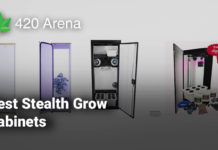
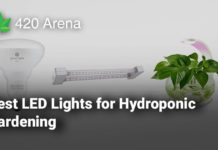

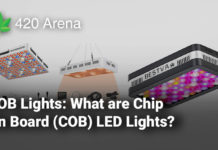


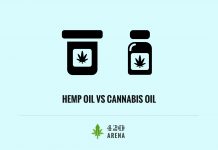
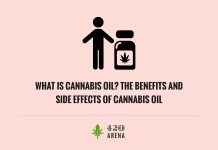

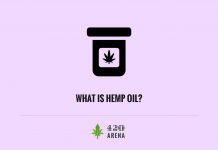
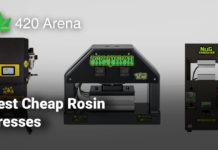

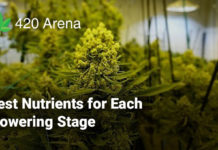
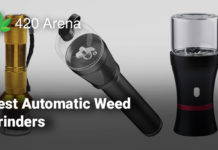
![How to Use Carbon Filters in Your Grow Room [7 Best Carbon Filters for Grow Rooms in 2021] How to Use Carbon Filters in Your Grow Room](https://420arena.com/wp-content/uploads/2020/12/How-to-Use-Carbon-Filters-in-Your-Grow-Room-218x150.jpg)







![How to Make a DIY Bubble Cloner [Complete Guide] How to Make a DIY Bubble Cloner](https://420arena.com/wp-content/uploads/2021/02/How-to-Make-a-DIY-Bubble-Cloner-218x150.jpg)





